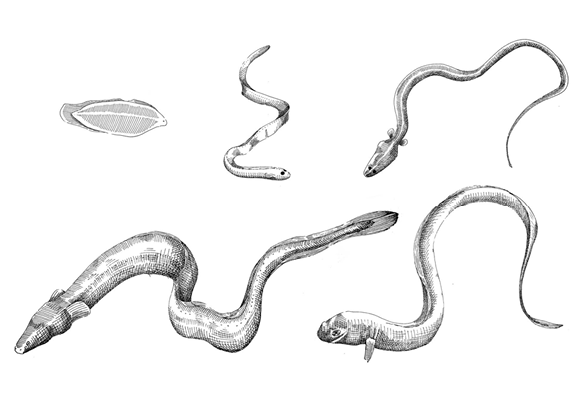A Slippery Business: In Search for Answers about the Critical Endangerment of the European Eel

The European eel (Anguilla Anguilla) is critically endangered, and its decline is commonly attributed to the illegal wildlife trade (IWT) to meet demand for human consumption. Europol estimates that the value of one kilogram of live glass eels (that is, baby eels) ranges from 500 to several thousand euros; prices that are bound to rise if the eel population continues to decline.
Estimates suggest that the population of glass eels stands between 1-10% of pre-1980s levels. This drastic decrease has gained increasing attention from national governments, conservation NGOs, ecologists, the private sector, and social scientists.
Dr Laura Gutiérrez, Department of Sociology, Social Policy, and Criminology, explored European eels and the cause of their decline as part of the ESRC-funded project ‘Beastly Business: Examining Wildlife Trade in Europe’, led by Professor Rosaleen Duffy, University of Sheffield.
The illegal wildlife trade (IWT) is a known driver of endangerment for the species; however, Dr Gutiérrez’s research found that characterising IWT as the predominant threat to eels oversimplifies a very complex issue. Findings showed the interface between legality and illegality in the catching and trading of European eels. At each operational stage of the eel business, from fishing to retail distributor legitimate actors are often engaged in illegal activities. These ‘green-collar crimes’ are environmental crimes that are committed by legally registered companies involved in illegal activities, or which use their infrastructure to facilitate illicit trade.
Due to this, the category of illegal wildlife trade was found to not fully capture the nature of the eel business, as actors often straddle the line between legality and illegality.
Additionally, although IWT is commonly identified as the main driver of European eel endangerment, the research also highlighted a wide variety of concerns related to the scientific, political, social, and economic layers that threaten the species; and it emphasised the crucial need to address other anthropogenic threats such as pollution, habitat loss, human-induced alterations in water courses, and hydropower development, in order to effectively conserve the species.
Speaking of the findings, Dr Laura Gutiérrez, Lecturer in Criminology, said:
“This analysis comes at a crucial time, with the European Commission, European Parliament, and ICES, acknowledging the urgent need to formulate conservation and stock management plans for the European eel that take into consideration the wide variety of threats to the species. We hope this study results in positive impact in reducing the harm to the European eel.”
Read the article ‘Harms and the Illegal Wildlife Trade: Political Ecology, Green Criminology and the European Eel’ and view the virtual art exhibition, produced in collaboration with artist, Sergio González.
If you’re interested in discussing this research area further, please contact Dr Laura Gutiérrez.